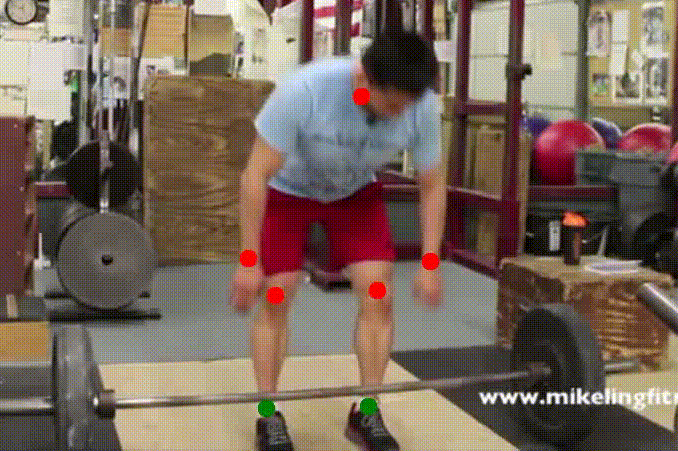Zongmian Li, Jiri Sedlar, Justin Carpentier, Ivan Laptev, Nicolas Mansard and Josef Sivic
Human joints recognized as in contact are shown in green, joints not in contact in red.
- Python 2 (tested on version 2.7)
- PyTorch (tested on version 0.3.1)
- Openpose (we are using this fork)
- CUDA (tested on CUDA 10.1 with GeForce GTX TITAN X)
- ffmpeg (required for creating and annotating new data)
- virtualenv (for creating isolated Python environments)
Please note that, for convenience, we will use ~/contact-recognizer as the default local directory for installing, training and testing contact recognizers.
-
Make a local copy of the project:
git clone https://github.com/zongmianli/contact-recognizer.git ~/contact-recognizer cd ~/contact-recognizer -
Set up virtualenv for the project:
virtualenv venv_contact_rec -p python2.7 source venv_contact_rec/bin/activate pip install -U pip pip install -r requirements.txt -
Download and set up pre-trained models:
wget https://www.di.ens.fr/willow/research/motionforcesfromvideo/contact-recognizer/models.tar.gz tar -xf models.tar.gzThis will create a top-level directory
models/which contains five pre-trained CNNs for recognizing the contact states of a set of human joints of interest: hands, knees, soles, toes and neck.
-
Download and set up the demo data by running:
source scripts/setup_demo_data.shThis will create a top-level directory
data/in~/contact-recognizer/with two subfolders:data/full_images/, which contains the demo video (in the form of image sequence) and the joint 2D positions obtained by applying Openpose to the frame images;data/joint_images/, which contains HDF5 data files of fixed-size image patches of human joints. The joint image patches, or simply joint images, are obtained by cropping around the five joints of interest given their estimated 2D positions in the images.
-
Run the demo. Update
repo_dirin scripts/run_demo.sh and run:source scripts/run_demo.shThis script will feed the joint images to the pre-trained CNNs to obtain an estimate for the joint contact states. The predicted contact states are saved in
results/demo.pkltogether with a set of visualization images saved inresults/demo_vis/. The visualization images are also shown in the teaser GIF of this page.
See doc/train.md.
See doc/test.md.
If you find the code useful, please consider citing:
@InProceedings{li2019motionforcesfromvideo,
author={Zongmian Li and Jiri Sedlar and Justin Carpentier and Ivan Laptev and Nicolas Mansard and Josef Sivic},
title={Estimating 3D Motion and Forces of Person-Object Interactions from Monocular Video},
booktitle={Computer Vision and Pattern Recognition (CVPR)},
year={2019}
}